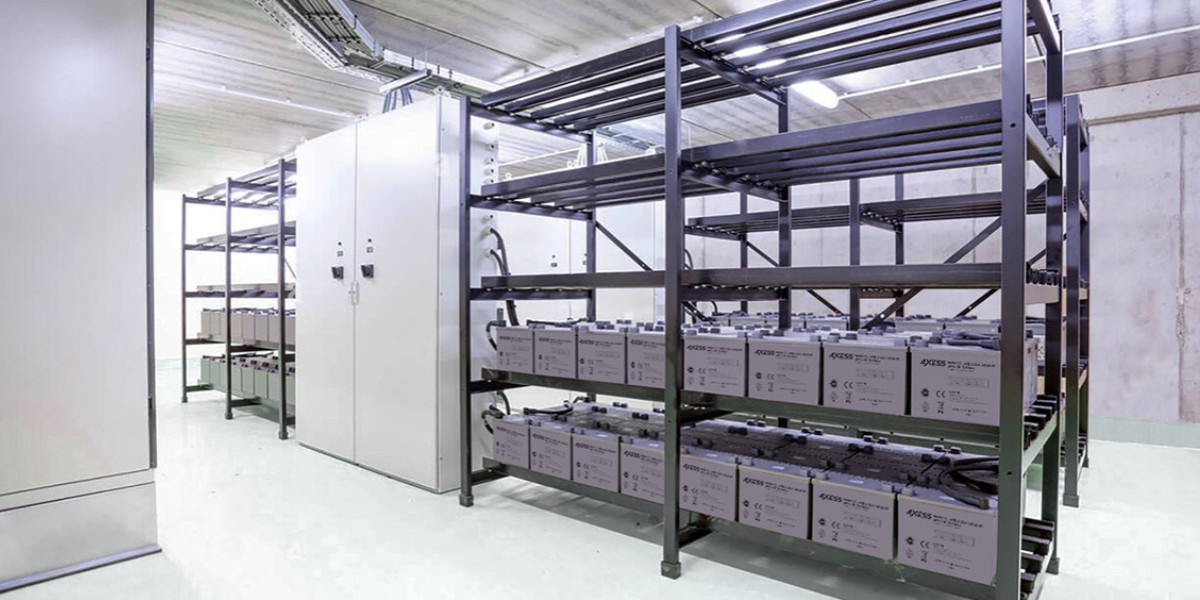Need for Battery Cabinets and Racks:
Physical observation of a battery is key in the maintenance of batteries in string and in avoiding undue incidents. The battery cabinets and racks make this task easy by having an orderly arrangement of batteries. Concerning maintenance, the proactive approach reaps rich benefits over a reactive measure. The idea is to monitor the performance based on factors such as thermal runaway, peak power performance, and low power performance, that give away any faults with the batteries. Once identified they can be replaced with a good one to ensure that the loop is performing its efficient best. This method is only feasible when the batteries are arranged in an array of racks or cabinets.
A battery investment, in any sector, involves considerable capital that needs to be safeguarded against any loss due to malfunction. The safety of the battery storage unit, the efficiency of the operational division of the battery, and the reliability of the consistent power output determines the success of many industries. To achieve this a robust arrangement of racks or cabinets is required for easy battery rack maintenance that can foresee issues and enables the team to rectify them avoiding any damage control methods later that incur huge losses. Starting from the moment a new battery arrives at a facility to the moment it is put to use, careful handling and expert supervision is required.
Features & Benefits:
- Made of high-quality heavy gauge steel
- Epoxy Powder coating to withstand general wear and tear
- Lifting eye for handling convenience
- Options for front access batteries or top terminal (monobloc) batteries
- Sturdy hinges concealed on the inside of cabinets
- Elegant padlocking for the door
- Secure locking mechanisms under seismic scenarios
- Insulations, body stiffeners, and adequate spacing on all sides
- Leakage-proof gaskets for containing spills as necessary
- See-through glass panels wherever necessary
- Outdoor units with rain-hooded vents
Factors Determining the Battery Arrangement:
The lead acid batteries which require proper ventilation are rack-mounted as per the general standards as compared to VRLA Batteries which use racks or cabinets. Based on the size, the batteries are rack-mounted if they are above 100 AH and used in cabinets if they are below that level. The number of battery units and the respective size of the battery determines rack or cabinet usage. If the unit is heavy [above 50 pounds] then lifting that battery and placing it in a rack seems a humongous task and hence cabinets are preferred. Further, if there are too many small batteries in a string instead of a large one then there are too many failure points to handle which will necessitate an inhouse battery rack maintenance operator at all times.
The location of batteries depends on the power requirement. An ordinary supply system to computers will be encased in cabinets and generally occupies a place near those computers. However, a larger power source is always rack-mounted inside the electrical room or adjacent to it to reduce voltage drop scenarios and to reduce short circuits if they are run with cables to a different location. As per general principle batteries are locked in cabinets or arranged in racks that are housed in access-protected rooms. Only authorized and skilled technicians are accessible to batteries at all times. The risk posed by an open rack battery is lethal (High voltage or arc blast) and hence access should be restricted only to authorized personnel.
The electrical and fire-related threats are equal regardless of the type of the battery and hence adequate spacing of the racks and the ventilation of cabinet design is of utmost importance. Gasses from batteries should not be collected in the lower flammability level [LFL] and hence an exhaust mechanism is required. Since cabinets in computer rooms are adequately aerated it usually doesn’t pose a threat. Reliable partners like AAGE International - Best Battery Supplier who have hands-on experience and who can provide rack-mounted battery solutions are recommended to save your investment. The unique selling point of a custom battery cabinet design is the flexibility it offers concerning simplicity in access. The neat arrangement of cables and grouping them or naming them as per their usage becomes naturally easy.
The mechanical design of a cabinet or a rack should accommodate spacing so that an operator can freely move his arm or tool without coming in contact with open terminals. Further tiers in racks can help accommodate more batteries in lesser space but pose high risks for increased numbers of batteries. The top clearance factor is often overlooked in cabinets, rendering access to the last battery difficult for the technician. As per the geological location, seismic measurements are a must before designing a large assortment of batteries in a single place. Tipping over, arcing, spillage, fire and toppling can be avoided if due seismic ratings are followed by the manufacturer of Battery Cabinets and Battery Racks.
Battery Cabinet or Battery Rack is a Necessary Investment:
It may sound trivial but a battery installation is to be carried out only with expert hands. An ounce of extra force with a wrong tool while installation can seriously affect the performance of the battery leading to irrevocable damage within half of its design life. The rigidness of connections renders damage and hence the nodes should be flexibly wired. Adequate bracing and flooring should be facilitated while commissioning the batteries in the racks. Temperature and air circulation are important factors while designing rack spaces and tiers. The interconnection resistance of batteries is to be measured and reported to manufacturers before being assembled in the respective racks. The acceptance testing ratings during the installation form the baseline to which the future measurements are compared during routine checking. Clearly defined risk management procedures should be observed at all times while maintaining the racks and cabinets. Best practices like battery cabinet disconnect features should be available in the cabinet for the comfort of the operators.
Some Safety Considerations:
- Continuous monitoring of batteries to spot damaged batteries
- Insulations, use of gloves, and safety glasses while operating with batteries
- Appropriate GFD to avoid grounding defects as per norms
- Heat, light, and pressure result in Arcing of batteries so adequate spacing is recommended
- Neutralizing agents of chemical hazards, such as baking soda should be available
- Handling as per procedure advised by the battery manufacturer
- Scheduled inspections and emergency drills to be devised
- Maintaining an ideal temperature of 20 to 25 degrees
- Following acceptance testing on assembling place







